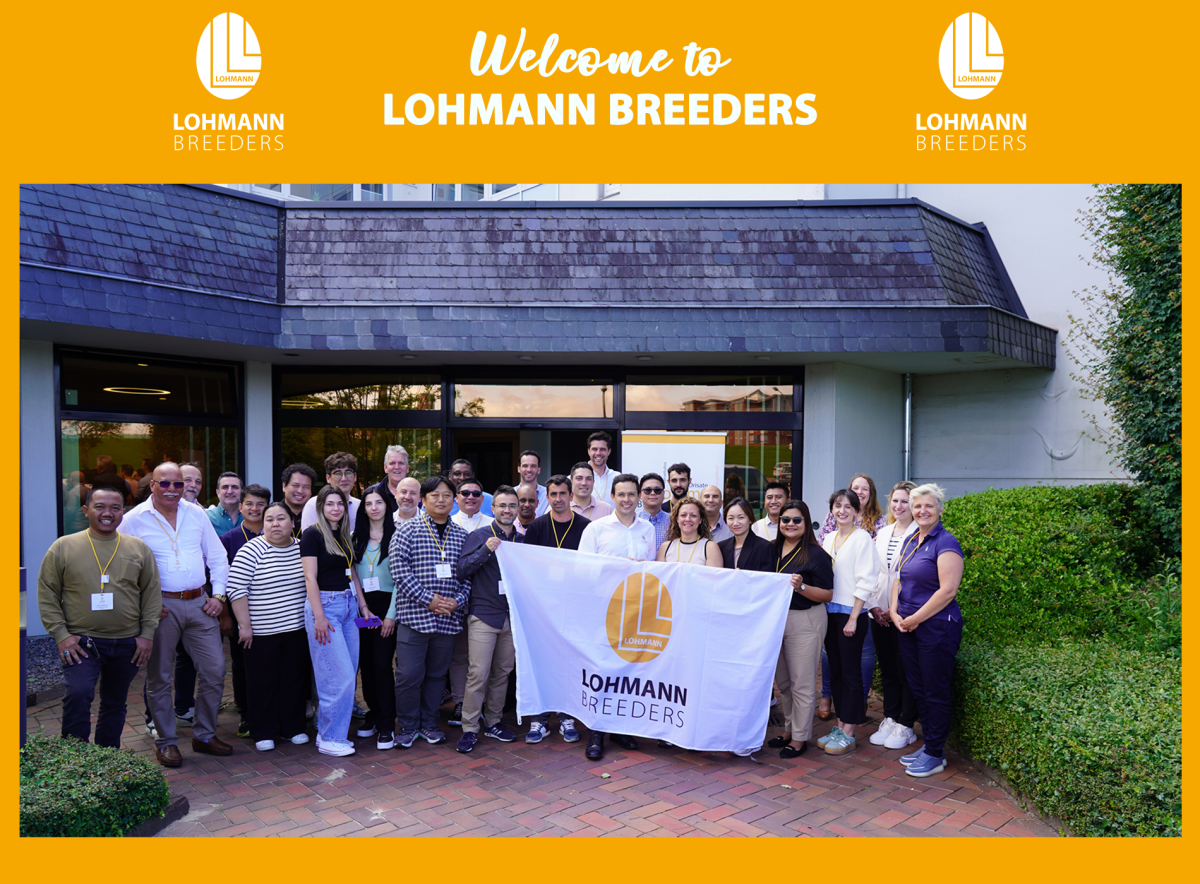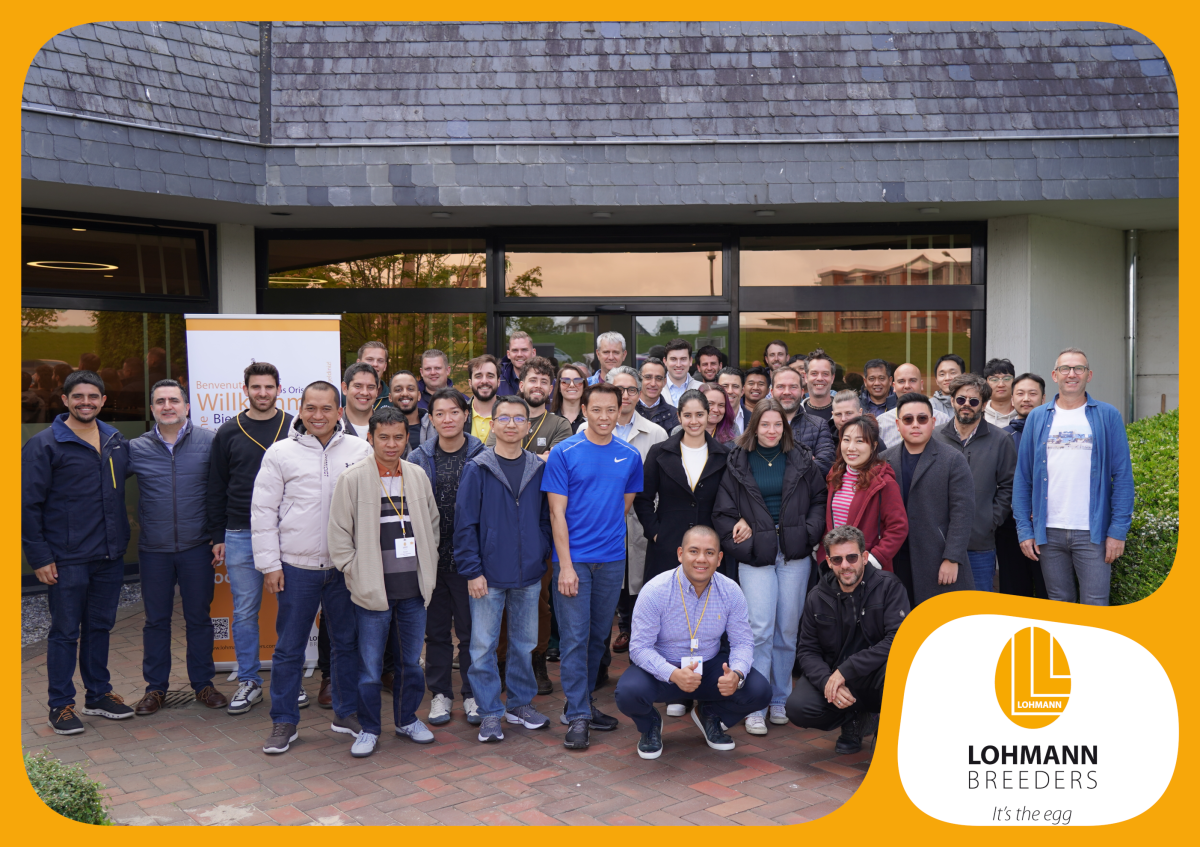After a period of four years the performance data has been updated.
The target performance data of all main products of the LOHMANN breeding programme have been elevated considerably for the last time in 2008. Then, for the first time separate performance standards for alternative housing systems were introduced in order to adjust to the changed general conditions due to barn, aviary and free-range systems. Since 2008, the performance standards have not been changed.
The genetically determined improvement has been accumulated over the past four years and after that, the new performance target was defined, which will now again last for some time.
Improvement of the laying persistency
Especially after the 50th week of life the productivity of the hens has improved. This is a logical consequence of the high selection priority set on the main breeding goal of laying persistency for saleable eggs. The better persistency at the end of the laying cycle as well as the continuously improved egg quality (breaking strength) lead to an increased productivity of the flocks providing saleable eggs.
This allows for an extended housing period (without moulting) resulting in reduced costs per pullet and egg and thus, offers an economic advantage for the egg producer. Under the common practical conditions, housing periods become increasingly longer: Flocks producing more than the 80 weeks stated in the former standards as the end of the production cycle are no longer a rarity.
The daily feed intake has not been changed genetically. Today, the hens are able to produce a higher egg mass with the same amount of feed, which is ascribed to the improved feed efficiency. The balanced breeding strategy aiming at an improved feed conversion led to increased production efficiency at the same feed requirement and a still sufficient feed intake capacity.
New international standards for cage systems

Due to the ban on conventional cage systems in the EU, especially in Western and Northern Europe the traditional cages have not been replaced with enriched cages but with barn, aviary and free-range systems allowing the hens an increased physical activity. The results with field flocks in such management systems are often lower compared to cage systems. Not only a lower egg number, but also a reduced egg weight can be observed in comparison with cage systems. This fact has been considered in the new data and an egg weight curve corresponding to the management system has been defined as a standard.
New standards for alternative management systems (barn, free-range and aviary systems)

The standards of LOHMANN TIERZUCHT laying hens both for cage and alternative systems have been defined in such a way that the production target is achieved at average management and environmental conditions. They do not represent the maximum attainable results respective to the genetic potential. We know that the genetic potential of laying hens of all strains is considerably higher than our field-related performance standards.
At this point, we cannot predict when the next adjustment of the targets will be carried out. LOHMANN TIERZUCHT invests a lot of work and capital in order to sustainably achieve further genetic progress also in the future. Not only with regard to the economically most important characteristics as laying performance and feed conversion, but also in a further improved egg quality (shell stability, shell colour) and survival rate.
Even after many generations of intensive selection, the genetic parameters (heritability) still indicate that additional progress in performance is possible. For sure, the biological limit of one egg per day is approaching and is already attained by many hens in the phase of the laying peak. Nevertheless, there still is a lot of potential for further improvement of persistency and shell stability for the future genetic enhancement of laying hens from the LOHMANN TIERZUCHT breeding programmes.
Dr. Matthias Schmutz, Genetics
The target performance data of all main products of the LOHMANN breeding programme have been elevated considerably for the last time in 2008. Then, for the first time separate performance standards for alternative housing systems were introduced in order to adjust to the changed general conditions due to barn, aviary and free-range systems. Since 2008, the performance standards have not been changed.
In the meantime, however, thanks to genetic progress as well as improved housing and management conditions increasingly better performances have been achieved in commercial farms. This applies both to housing in conventional cage systems still common in non-EU countries and to enriched cages within the European Union and alternative systems. An adjustment to the target performances is not carried out every year.
The genetically determined improvement has been accumulated over the past four years and after that, the new performance target was defined, which will now again last for some time.
Improvement of the laying persistency
Especially after the 50th week of life the productivity of the hens has improved. This is a logical consequence of the high selection priority set on the main breeding goal of laying persistency for saleable eggs. The better persistency at the end of the laying cycle as well as the continuously improved egg quality (breaking strength) lead to an increased productivity of the flocks providing saleable eggs.
This allows for an extended housing period (without moulting) resulting in reduced costs per pullet and egg and thus, offers an economic advantage for the egg producer. Under the common practical conditions, housing periods become increasingly longer: Flocks producing more than the 80 weeks stated in the former standards as the end of the production cycle are no longer a rarity.
For this reason, the performance standards for production in cage systems were extended from 80 to 90 weeks. In alternative systems depopulation takes place averagely earlier than in cage systems, thus the performance standards for this production system was only extended up to 85 weeks.
The daily feed intake has not been changed genetically. Today, the hens are able to produce a higher egg mass with the same amount of feed, which is ascribed to the improved feed efficiency. The balanced breeding strategy aiming at an improved feed conversion led to increased production efficiency at the same feed requirement and a still sufficient feed intake capacity.
New international standards for cage systems

Due to the ban on conventional cage systems in the EU, especially in Western and Northern Europe the traditional cages have not been replaced with enriched cages but with barn, aviary and free-range systems allowing the hens an increased physical activity. The results with field flocks in such management systems are often lower compared to cage systems. Not only a lower egg number, but also a reduced egg weight can be observed in comparison with cage systems. This fact has been considered in the new data and an egg weight curve corresponding to the management system has been defined as a standard.
New standards for alternative management systems (barn, free-range and aviary systems)

The standards of LOHMANN TIERZUCHT laying hens both for cage and alternative systems have been defined in such a way that the production target is achieved at average management and environmental conditions. They do not represent the maximum attainable results respective to the genetic potential. We know that the genetic potential of laying hens of all strains is considerably higher than our field-related performance standards.
At this point, we cannot predict when the next adjustment of the targets will be carried out. LOHMANN TIERZUCHT invests a lot of work and capital in order to sustainably achieve further genetic progress also in the future. Not only with regard to the economically most important characteristics as laying performance and feed conversion, but also in a further improved egg quality (shell stability, shell colour) and survival rate.
Even after many generations of intensive selection, the genetic parameters (heritability) still indicate that additional progress in performance is possible. For sure, the biological limit of one egg per day is approaching and is already attained by many hens in the phase of the laying peak. Nevertheless, there still is a lot of potential for further improvement of persistency and shell stability for the future genetic enhancement of laying hens from the LOHMANN TIERZUCHT breeding programmes.
Dr. Matthias Schmutz, Genetics







